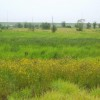Abstract
Phosphate mining is a temporary land use. The jobs and economic activity associated with mining depart an area once the resource is exhausted — but the landscape created as a result of mining and reclamation will exist in perpetuity. Communities affected by mining activities need to have reclamation result in lands with high potential to provide sustainable economic opportunities while maintaining ecosystem services and ecological functions. This 8-page fact sheet provides a brief overview of the landscapes being created as a result of phosphate mining and reclamation activities in Florida. Written by M. Wilson and E.A. Hanlon, and published by the UF Department of Soil and Water Science, October 2012.
References
Brown, M.T. 2005. "Landscape Restoration Following Phosphate Mining: 30 Years of Co-evolution of Science, Industry and Regulation." Ecol. Eng. 24: 309-29. https://doi.org/10.1016/j.ecoleng.2005.01.014
Cates, J.W.H. 1992. A Regional Conceptual Plan for the Southern Phosphate District of Florida. Florida Department of Environmental Protection Bureau of Mine Reclamation. http://www.dep.state.fl.us/water/mines/ihn/docs/RegionalConceptualPlan_So_Phosphate_District_FL.pdf.
Dillaha, T.A., R.B. Reneau, S. Mostaghimi, and D. Lee. 1989. "Vegetative Filter Strips for Agricultural Nonpoint Source Pollution Control." Transactions of ASABE 32(2): 513-19. https://doi.org/10.13031/2013.31033
Florida Department of Agriculture and Consumer Services (FDACS). 2011. Silviculture Best Management Practices. http://www.floridaforestservice.com/publications/silvicultural_bmp_manual.pdf.
FDACS. 2008. Water Quality Best Management Practices for Florida Cow/Calf Operations. DACS-P-01280. Florida Department of Agriculture and Consumer Services Office of Agricultural Water Policy. http://www.floridaagwaterpolicy.com/PDF/Bmps/Bmp_FloridaCowCalf2008.pdf.
Florida Department of Environmental Protection (FDEP). 2006. Mandatory Phosphate Mine Reclamation. Florida Administrative Code (F.A.C.) Rule 62C-16.
FDEP. 2007. Peace River Cumulative Impact Study. Final Report. http://www.dep.state.fl.us/water/mines/pr_cis.htm.
FDEP. 2011. Rate of Reclamation Report, July 1, 1975 through December 31, 2010. http://www.dep.state.fl.us/water/mines/docs/2010ror.pdf.
Hanlon, E.A., M. Wilson, C. Beavers, and J. Cates. 2011. Landscape Diversity: Multiple-Use Landscapes for Reclaimed Phosphatic Clay Areas. SL229. Gainesville, FL: University of Florida Institute of Food and Agricultural Sciences. http://edis.ifas.ufl.edu/ss449. https://doi.org/10.32473/edis-ss449-2011
Jones, D.B., C. Riddle, and J. Eitzen. 1994. "Rice Performance Trial." In The Polk County Mined Lands Agricultural Research and Demonstration Project, edited by D. Shibles and J. Stricker. Publ. No. 03-088-107. Bartow, FL: Florida Institute of Phosphate Research.
Mislevy, P., W.G. Blue, and C.E. Roessler. 1989. "Productivity of Clay Tailings from Phosphate Mining: I. Biomass Crops." J. Env. Qual. 18: 95-100. https://doi.org/10.2134/jeq1989.00472425001800010017x
Mislevy, P., W.G. Blue, and C.E. Roessler. 1990. "Productivity of Clay Tailings from Phosphate Mining: II. Forage Crops." J. Env. Qual. 19: 694-700. https://doi.org/10.2134/jeq1990.00472425001900040011x
Mislevy, P., W.G. Blue, C.E. Roessler, and F.G. Martin. 1991. "Productivity of Clay Tailings from Phosphate Mining: III. Grain Crops." J. Env. Qual. 20: 788-94. https://doi.org/10.2134/jeq1991.00472425002000040013x
Munoz-Carpena, R., Y. Kuo, and Y. Li. 2007. Using Vegetative Filter Strips to Reduce Phosphorus Runoff Transport from Reclaimed Phosphate Mining Areas in Central Florida. Final Project Report to the Florida Department of Environmental Protection-Bureau of Mine Reclamation, DEP contract no. SP633. Gainesville, FL: University of Florida.
Mulkey, W.D., R.L. Clouser, and T.G. Taylor. 1994. "Estimated Production Costs for Selected Vegetables Produced on Reclaimed Phosphatic Clay Soils." In The Polk County Mined Lands Agricultural Research and Demonstration Project, edited by D. Shibles and J. Stricker. Publ. No. 03-088-107. Bartow, FL: Florida Institute of Phosphate Research.
Rahmani, M.R., and R. Degner. 1994. "Market Opportunities for Feed Grains and Alfalfa Hay Produced on Reclaimed Phosphatic Clay in Florida." In The Polk County Mined Lands Agricultural Research and Demonstration Project, edited by D. Shibles and J. Stricker. Publ. No. 03-088-107. Bartow, FL: Florida Institute of Phosphate Research.
Rockwood, D.L, D.R. Carter, and J.A. Stricker. 2008. Commercial Tree Crops for Phosphate Mined Lands. Publ. No. 99-03-141R. Bartow, FL: Florida Institute of Phosphate Research.
Schreuder, P.J., and T. Pichler. 2010. Wastewater Treatment with Wetland and Tailings Sands Filtration Prior to Confined Aquifer Recharge. Publ. No. 03-153-239. Bartow, FL: Florida Institute of Phosphate Research.
Tamang, B. 2005. Vegetation and Soil Quality Changes Associated With Reclaiming Phosphate-Mine Clay Settling Areas With Fast-Growing Trees. Master's Thesis. Gainesville, FL: University of Florida.
Wilson, M., and E.A. Hanlon. 2012a. Florida Reclaimed Phosphate Mine Soils: Characteristics, Potential Uses, and Management Considerations. SL370. Gainesville, FL: University of Florida Institute of Food and Agricultural Sciences. http://edis.ifas.ufl.edu/ss571.
Wilson, M., and E.A. Hanlon. 2012b. Landscape Diversity: Florida Phosphate Mine Pit Lakes. SL364. Gainesville, FL: University of Florida Institute of Food and Agricultural Sciences. http://edis.ifas.ufl.edu/ss565. https://doi.org/10.32473/edis-ss565-2012
United States Geological Survey (USGS). 2011. "Phosphate Rock." 2010 Minerals Yearbook. Accessed March 20, 2012. http://minerals.usgs.gov/minerals/pubs/commodity/phosphate_rock/myb1-2010-phosp.pdf.

